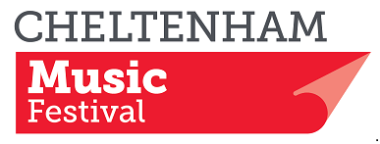
 United Kingdom Handel/Halvorsen, Liszt, Schubert/Liszt, Tchaikovsky, Schwertsik, Brahms: Esther Yoo (violin), Narek Haknazaryan (cello), Zhang Zuo (piano), Cheltenham Music Festival, Pittville Pump Room, Cheltenham,14.7.2016. (RJ)
United Kingdom Handel/Halvorsen, Liszt, Schubert/Liszt, Tchaikovsky, Schwertsik, Brahms: Esther Yoo (violin), Narek Haknazaryan (cello), Zhang Zuo (piano), Cheltenham Music Festival, Pittville Pump Room, Cheltenham,14.7.2016. (RJ)
Handel/Halvorsen: Passacaglia for violin and cello
Liszt: Spanish Rhapsody
Schubert/Liszt: Liebesbotschaft
Tchaikovsky: ‘Danse Russe’ and ‘Pas de deux’ (Swan Lake)
Kurt Schwertsik: A Windrose for Mauricio: Four Vocalises for violincello, Op 115 (premiere)
Brahms: Sonata No 2 for cello and piano in F, Op 99; Hungarian Dance 6
I had been looking forward to hearing Pavel Kolesnikov, to my mind one of the most notable of the recent BBC Radio 3 New Generation Young Artists, but unfortunately he was unable to make it because of visa difficulties. This necessitated substantial changes to the advertised programme, so out went Martinù’s Duo No 1 for violin and cello, Beethoven’s Piano Sonata in G, Op 14 and Kreisler’s Recitativo and Scherzo-Caprice for violin.
The Passacaglia which replaced the Martinù gave a strong start to the first half of the recital. Yoo and Haknazaryan played together as one with a spring in their step in a performance full of variety.
Yet, the rest of the first half seemed lightweight. That is not to say it was badly performed: Zhang Zuo showed a strong affinity for the music of Franz Liszt, especially in her passionate and flamboyant performance of Liebesbotschaft. However, the Tchaikovsky ballet item seemed out of place despite the expressive violin playing of Esther Yoo.
The second part of the recital was a great improvement and featured a premiere by Kurt Schwertsik inspired by music by Mauricio Kagel. The audience were treated to an impressive performance of the work by Narek Haknazaryan in which the cello sang out with intensity. The first Vocalise was emotionally very satisfying while the second featured a more attacking stance with abrupt pauses. Emotion was present in the third but slowly died down to create a more contemplative effect, while the final one with its pizzicato passage was extremely satisfying. Solo works like this test the mettle of any performer, but Haknazaryan’s commitment and understanding of the music mark him out as a musician of great promise.
The major work of the recital, the Brahms Sonata, came off well despite the change of pianist, the duo giving full rein to the Romanticism of the work with restless tremolos for both instruments in the first movement. The slow solemnity of the second was well expressed, and the cross rhythms of the scherzo made for some thrilling moments. The dynamism of Zuo coupled with the passionate intensity of Haknazaryan made this a performance to savour.
For an encore all three musicians came on stage to play the Hungarian Dance No 6, full of gypsy ardour and spectacular changes of tempo – a cheerful end to a recital which had its disappointments.
Roger Jones
